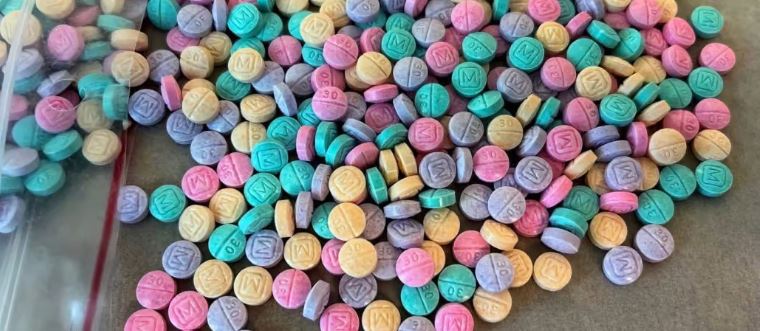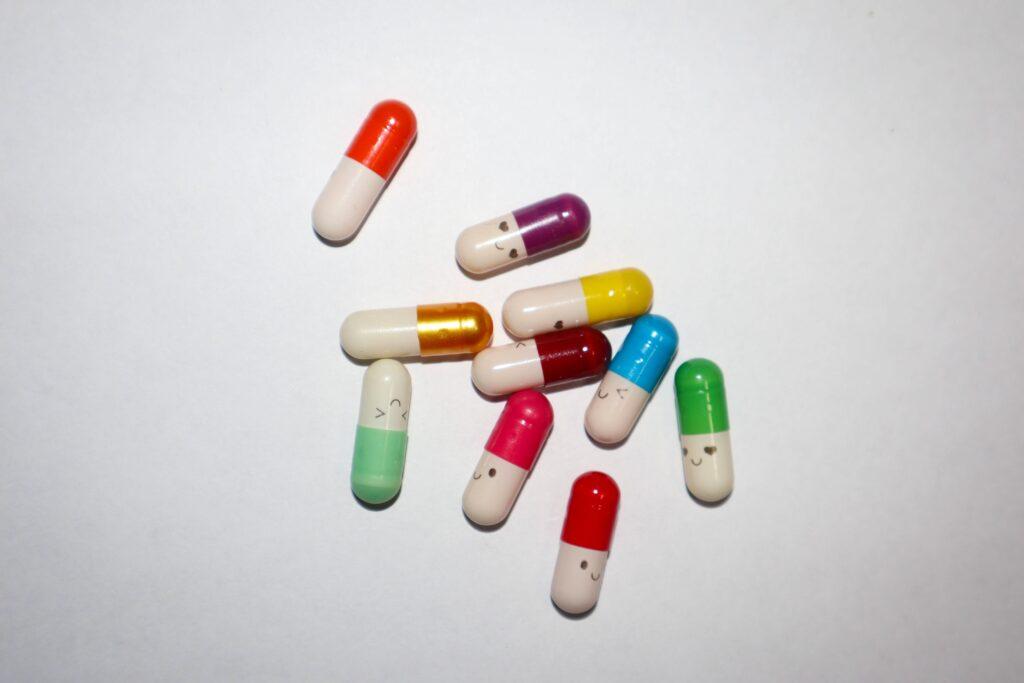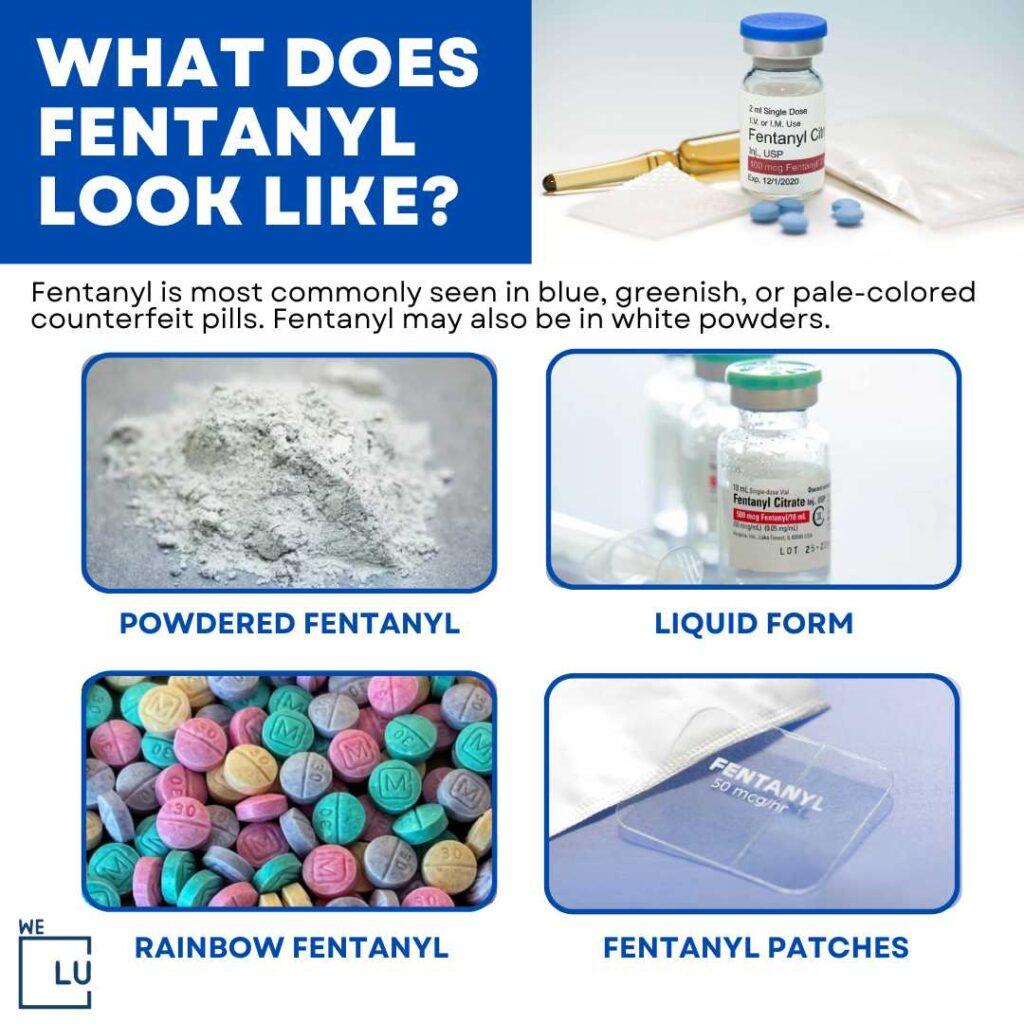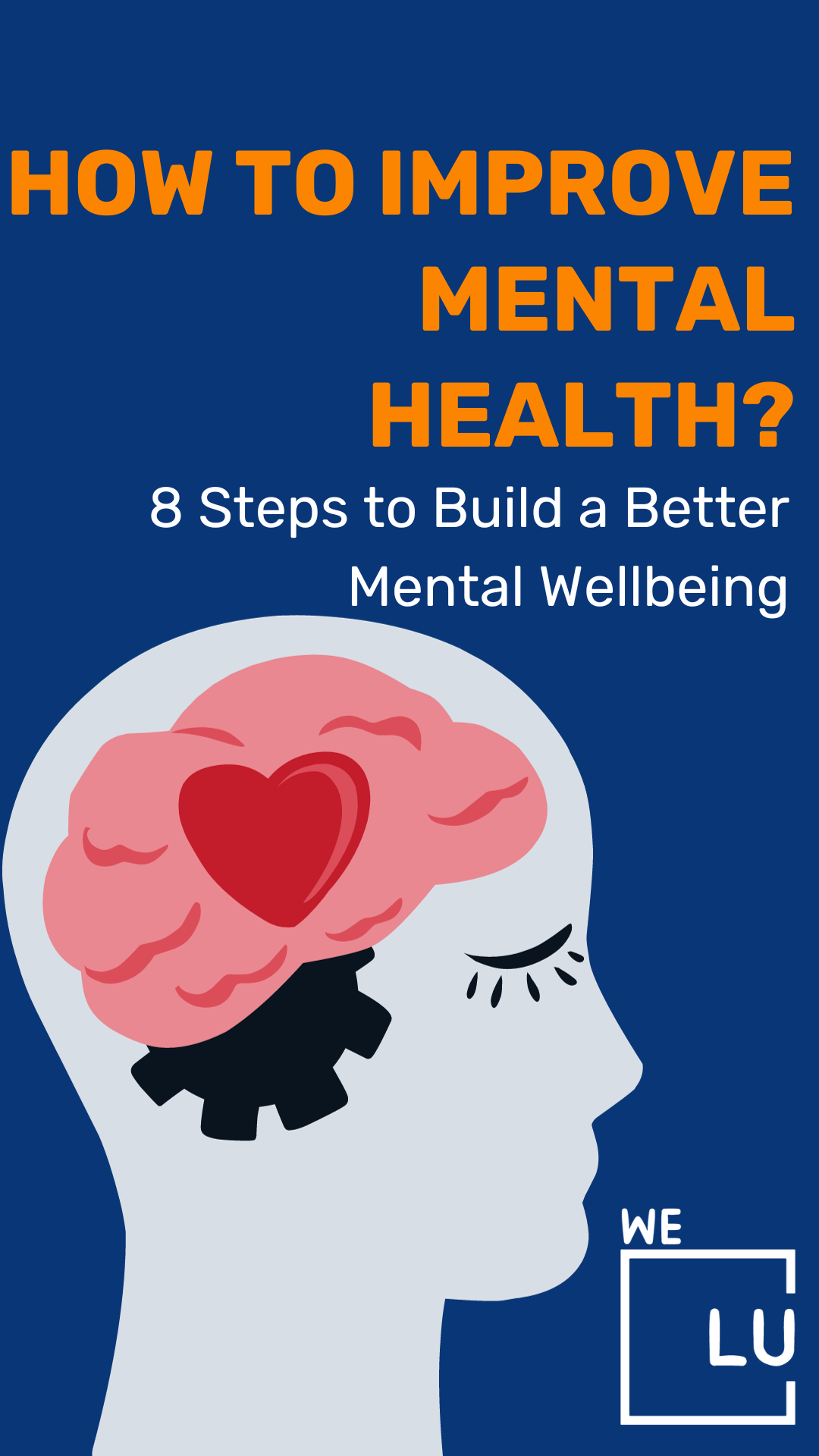What Is Purple Fentanyl?
Purple fentanyl, a potent synthetic opioid, has garnered significant attention due to its alarming emergence in the illicit drug trade. This substance is a synthetic variant of fentanyl. This highly potent opioid painkiller is estimated to be 50 to 100 times more potent than morphine and has legitimate medical uses when administered under strict medical supervision. The illicit market, however, has taken a dark turn with the production and distribution of purple fentanyl, raising critical concerns within both law enforcement agencies and public health sectors.
Origins and Composition
Purple fentanyl gets its name from its distinct hue, often due to the addition of synthetic dyes during production. These pills’ composition and purity can vary significantly, making them even more dangerous. While standard fentanyl is already associated with a high risk of overdose and death due to its potency, the added uncertainty of variable composition further exacerbates the peril.
Reasons Behind Color Variation
The question of why fentanyl is dyed purple is multi-faceted. The primary reason appears to be a branding strategy by illicit manufacturers and dealers. By introducing unique colors like purple, these entities aim to create a distinctive visual identity for their products, potentially attracting new users while setting them apart in an overcrowded illicit drug market. The intent is to increase demand and thereby maximize profits.
Implications and Health Risks
The emergence of purple fentanyl brings about dire consequences. Its potency, varying compositions, and inconsistent dosages drastically heighten the risk of overdose and death. Users may underestimate the strength of the substance, leading to dangerous miscalculations. Additionally, the use of synthetic dyes raises concerns about potential allergic reactions or unforeseen health complications.
Here is a table outlining critical aspects of purple fentanyl:
| Aspect | Description |
|---|---|
| Composition | Synthetic opioid variant of fentanyl |
| Potency | Estimated 50 to 100 times stronger than morphine |
| Color | Often dyed purple for branding purposes |
| Illicit Distribution | Flourishes in illegal drug trade |
| Health Risks | High risk of overdose due to potency and variable dosages |
| Law Enforcement | Illicit production and distribution subject to legal action |
| Public Health Impact | Requires interventions in harm reduction and education |
In conclusion, the emergence of purple fentanyl underscores the urgent need for comprehensive efforts in public health, law enforcement, and substance abuse rehabilitation. The allure of its unique color belies the deadly potency within, necessitating increased awareness, education, and support to combat the escalating crisis and its impact on individuals and communities alike.

Skip To:
Learn More:
- How Does Fentanyl Make You Feel, Does Fentanyl Get You High & How Long Does Fentanyl High Last?
- What is the Fentanyl Half Life & How Long Does Fentanyl Last?
- How Long Does Fentanyl Stay In Urine? Fentanyl Urine Testing
- Why Is Fentanyl So Dangerous? Dangers Of Fentanyl & How Much Fentanyl Is Dangerous?
- How Is Fentanyl Made? Fentanyl Facts
- How Long Does Fentanyl Stay In Your System, Urine, Blood, Salvia & Hair? Fentanyl Drug Test Duration Chart.
- What Does Fentanyl Do To You? Abuse, Side Effects & Treatment
- What is Fentanyl? Rainbow Fentanyl Symptoms, Uses, Side Effects, Overdose & Detox Withdrawal Timeline
- What Does Fentanyl Look Like? Rainbow Fentanyl, Colored Candy Fentanyl, Skittles Fentanyl Images, Facts, Warnings, & FAQs
- Carfentanil Drug
Get Help. Get Better. Get Your Life Back.
Searching for Accredited Drug and Alcohol Rehab Centers Near You?
Even if you have failed previously and relapsed, or are in the middle of a difficult crisis, we stand ready to support you. Our trusted behavioral health specialists will not give up on you. When you feel ready or just want someone to speak to about therapy alternatives to change your life call us. Even if we cannot assist you, we will lead you to wherever you can get support. There is no obligation. Call our hotline today.
(844) 597-1011Popular Purple Fentanyl FAQs
-
Is Fentanyl Purple?
Fentanyl itself is not naturally purple. However, illicit manufacturers sometimes add synthetic dyes to fentanyl and create pills that are purple. This is done for branding purposes in the illegal drug market.
-
What Is A Purple Fentanyl Pill?
A purple fentanyl pill is a type of synthetic opioid tablet that contains fentanyl as its active ingredient. These pills are often dyed purple using synthetic dyes. Purple is a unique identifier for these illicit substances in the illegal drug trade.
-
Can Fentanyl Be Purple?
Yes, fentanyl can be made to appear purple by adding synthetic dyes during the manufacturing process. The reason for dyeing fentanyl purple is mainly to distinguish it from other drugs and to create a recognizable brand for illegal drug products.
Fentanyl Factsheet
Fentanyl Overview
Fentanyl is a synthetic opioid used to treat moderate to severe pain, especially in cancer patients or after surgery. It is 50 to 100 times more potent than morphine and can cause respiratory depression, addiction, and overdose. It can be prescribed in different forms, such as injection, nasal spray, patch, tablet, spray, or lozenge. It can also be illegally made and mixed with other drugs, such as heroin or cocaine.
Fentanyl Abuse Methods
- Intravenous Injection: Some individuals abuse fentanyl by injecting it directly into their veins. This method produces rapid and intense effects as the drug quickly enters the bloodstream.
- Transdermal Patches: Abusing fentanyl patches involves extracting the gel from the patch and either consuming it orally or injecting it. This method is dangerous due to the high concentration of fentanyl in the gel.
- Oral Consumption: Fentanyl pills or lozenges can be swallowed, although this method is less common due to the drug’s potency.
- Smoking: While possible, smoking fentanyl is a highly hazardous practice. The drug is heated on foil, and the resulting vapor is inhaled. Due to fentanyl’s potency, even a slight miscalculation in dosage can lead to overdose and death. This method is strongly discouraged.
- Snorting: Some individuals crush fentanyl pills or powder and snort it. Like other methods of abuse, this is risky due to the drug’s potency, potentially causing rapid and intense effects that increase the risk of overdose.
The Colors Of Fentanyl
- White: The most common and natural color of fentanyl. When used for medical purposes under strict supervision, fentanyl is typically found in its white powder or patch form.
- Purple: Illicit fentanyl pills are sometimes dyed purple using synthetic dyes. This distinctive color is often chosen for branding purposes within the illegal drug market, making these pills easily recognizable and differentiating them from other substances.
- Blue: Similar to purple, blue fentanyl pills are also manufactured with the addition of synthetic dyes. Blue is another color choice illicit producers use to create a recognizable and unique product appearance.
- Green: Illicit fentanyl pills in shades of green have also been reported. Like other colors, the green coloration aims to establish a distinct identity for these substances in the illicit drug trade.
- Pink: Pink fentanyl pills, like their counterparts, are often a result of synthetic dye additives during production. These vibrant colors make the pills stand out and attract users.
- Other Colors: Illicit drug manufacturers have created fentanyl pills in various colors, including red, yellow, and multi-colored combinations. These colors are part of a strategy to establish a unique brand identity for their products, despite the inherent dangers of fentanyl use.
- Color Variation: It’s important to note that the color of fentanyl pills can vary between batches and even within the same batch. Users should not use color to indicate potency, purity, or safety.
Fentanyl Abuse Statistics
Fentanyl abuse statistics show that fentanyl is a highly potent synthetic opioid significantly contributing to the opioid epidemic in the United States. In 2020, there were over 93,000 drug overdose deaths in the US, with fentanyl involved in over 60%. Fentanyl abuse has also increased in other countries, including Canada and the United Kingdom.
73%
Synthetic opioids, including fentanyl, were involved in almost 73% of all opioid-related overdose deaths in 2019.
Source: CDC
1.6 million
Approximately 1.6 million people aged 12 or older misused prescription pain relievers like fentanyl for the first time in 2020.
Source: The National Survey on Drug Use and Health
57%
Fentanyl seizures by law enforcement in the US increased by 57% from 2019 to 2020, with nearly 17,000 pounds of fentanyl seized in 2020.
Source: DEA

Get Your Life Back
Find Hope & Recovery. Get Safe Comfortable Detox, Addiction Rehab & Dual Diagnosis High-Quality Care.
Hotline(844) 597-1011
Why Is Fentanyl Purple?
The emergence of purple fentanyl has raised questions about the motivations behind its distinctive coloration. While fentanyl is not naturally purple, illicit manufacturers have been known to add synthetic dyes to the drug during production, resulting in its striking purple appearance. Understanding the reasons behind this practice involves delving into various factors, including branding, market differentiation, and the complex dynamics of the illicit drug trade.
- Branding and Identity: One of the primary reasons for dyeing fentanyl purple is the desire to establish a unique and recognizable brand within the illicit drug market. Just as legitimate companies use distinct logos and packaging to distinguish their products, illegal drug manufacturers aim to create a visual identity that sets them apart. Purple, a color not commonly associated with prescription medications, draws attention and creates a memorable image for potential buyers.
- Market Differentiation: In a crowded and competitive illicit drug market, differentiation is crucial. By dyeing fentanyl pills purple, manufacturers can instantly differentiate their products. This can increase demand, especially among users familiar with or attracted to the specific color. The unique appearance can make these pills seem more appealing and novel, potentially driving higher sales and profit margins for illicit dealers.
- Cultural and Psychological Factors: Colors often carry cultural and psychological associations that can influence consumer behavior. Purple, for instance, has historically been associated with qualities like luxury, mystery, and uniqueness. These associations may subconsciously influence potential buyers, making purple fentanyl pills seem more alluring or valuable than other, less visually distinct substances.
- Impact on Users: Synthetic dyes in the production of purple fentanyl raises concerns beyond its appearance. Users may falsely interpret the unique color as an indicator of potency or quality, leading to potentially dangerous miscalculations in dosage. Additionally, introducing synthetic dyes into these pills poses a health risk, as individuals may have allergic reactions or experience unexpected side effects.
- Law Enforcement and Public Health Implications: Introducing uniquely colored fentanyl pills complicates law enforcement efforts. The colorful appearance can make detecting and identifying illicit substances more challenging, as they may be mistaken for other non-controlled medications. Public health officials and rehabilitation centers face the challenge of educating the public about the dangers of these colorful fentanyl pills and the importance of seeking help for substance abuse.
In summary, the decision to make fentanyl purple is primarily driven by the desire to create a distinct brand and identity within the illicit drug market. This practice underscores the intricate interplay between visual aesthetics, consumer behavior, and the alarming realities of substance abuse. As communities grapple with the repercussions of this trend, raising awareness about the dangers of colorful fentanyl and offering support for those affected become paramount in addressing this evolving public health concern.
First-class Facilities & Amenities
World-class High-Quality Addiction & Mental Health Rehabilitation Treatment
Rehab Centers TourRenowned Addiction Centers. Serene Private Facilities. Inpatient rehab programs vary.
Addiction Helpline(844) 597-1011Proven recovery success experience, backed by a Team w/ History of:
15+
Years of Unified Experience
100s
5-Star Reviews Across Our Centers
10K
Recovery Success Stories Across Our Network
- Low Patient to Therapist Ratio
- Onsite Medical Detox Center
- Comprehensive Dual-Diagnosis Treatment
- Complimentary Family & Alumni Programs
- Coaching, Recovery & Personal Development Events
Is There Purple Fentanyl Powder?
Fentanyl, in its pure form, is a white, odorless powder. The purple color associated with “purple fentanyl” typically comes from synthetic dyes added during the illicit manufacturing process of fentanyl pills rather than from the natural properties of the drug itself.
The practice of dyeing fentanyl pills is a branding strategy employed by illicit drug manufacturers to create a recognizable visual identity for their products in the illegal drug market. This distinctive coloring is intended to attract attention, differentiate their product from others, and potentially increase demand among users drawn to the unique appearance.
It’s important to note that fentanyl is a highly potent synthetic opioid, and its misuse and abuse can have severe and even fatal consequences. Introducing synthetic dyes or other additives can further complicate the already dangerous landscape of illicit drug use, potentially leading to unpredictable health risks or adverse reactions for individuals who consume these substances.

World-class, Accredited, 5-Star Reviewed, Effective Addiction & Mental Health Programs. Complete Behavioral Health Inpatient Rehab, Detox plus Co-occuring Disorders Therapy.
CALL(844) 597-1011End the Addiction Pain. End the Emotional Rollercoaster. Get Your Life Back. Start Drug, Alcohol & Dual Diagnosis Mental Health Treatment Now. Get Free No-obligation Guidance by Substance Abuse Specialists Who Understand Addiction & Mental Health Recovery & Know How to Help.
We Level Up Fentanyl Addiction Treatments Treatment
Welcome to We Level Up Treatment Center, where we are dedicated to providing comprehensive and compassionate care to individuals struggling with Fentanyl addiction. Our mission is to help you regain control of your life and pave the way for a brighter, healthier future. Our range of services is tailored to address the unique challenges posed by Fentanyl addiction, ensuring that you receive the support you need at every step of your recovery journey.
- Medical Detoxification: Our experienced medical team will guide you through a safe and monitored detoxification process. We understand the physical and emotional toll of withdrawal, and we’re here to ensure your comfort and safety as your body adjusts to the absence of Fentanyl.
- Individualized Treatment Plans: We recognize that each person’s journey is unique. Our team of experts will work closely with you to develop a personalized treatment plan that addresses your specific needs, preferences, and goals.
- Evidence-Based Therapies: Our therapeutic interventions are grounded in evidence-based approaches, including Cognitive Behavioral Therapy (CBT), Dialectical Behavior Therapy (DBT), and Motivational Interviewing. These therapies help you understand the underlying factors driving your addiction and equip you with essential coping skills.
- Group Therapy: Group therapy sessions provide a supportive environment to connect with others facing similar challenges. Sharing experiences, insights, and strategies can foster community and mutual encouragement.
- Family Counseling: Addiction affects the individual and their loved ones. Our family counseling sessions promote healing, understanding, and effective communication, strengthening your support network for lasting recovery.
- Dual Diagnosis Treatment: Addressing co-occurring mental health issues is essential for sustainable recovery. Our dual diagnosis program ensures that any underlying mental health concerns are thoroughly assessed and integrated into your treatment plan.
- Holistic Approaches: To nurture your overall well-being, we offer holistic therapies such as mindfulness meditation, yoga, art therapy, and fitness programs. These activities promote emotional balance and help you develop healthier habits.
- Relapse Prevention Skills: Equipping you with the tools to manage triggers and prevent relapse is a crucial focus of our treatment. Our relapse prevention strategies empower you to navigate challenges and maintain your progress.
- Aftercare Planning: Transitioning back to daily life post-treatment can be challenging. We provide thorough aftercare planning, connecting you with ongoing support, outpatient resources, and local support groups to ensure your continued success.
- Continued Support: Our commitment to your recovery doesn’t end with your time at We Level Up. We offer ongoing follow-up and check-ins to celebrate your achievements and provide guidance if you encounter hurdles.
At We Level Up Treatment Center, we believe in your capacity to overcome Fentanyl addiction and build a fulfilling life in recovery. Our comprehensive services are designed to empower you with the skills and resilience needed to embrace a brighter future. You’re not alone in this journey – we’re here to support you every step of the way.
Experience Transformative Recovery at We Level Up Treatment Centers.
See our authentic success stories. Get inspired. Get the help you deserve.
Start a New Life
Begin with a free call to an addiction & behavioral health treatment advisor. Learn more about our dual-diagnosis programs. The We Level Up Treatment Center Network delivers recovery programs that vary by each treatment facility. Call to learn more.
- Personalized Care
- Caring Accountable Staff
- World-class Amenities
- Licensed & Accredited
- Renowned w/ 100s 5-Star Reviews
We’ll Call You
Watch The Drug Addiction Informative Video
Video Script
Joey’s Opiates, Drugs, and Alcohol Addiction Recovery Story
The narrative of Joey serves as a poignant and sobering testament to the unrelenting grip of addiction. His path has been marred by formidable hurdles, the weight of which he has courageously shouldered in his pursuit of healing and transformation following the heart-wrenching loss of his son. However, Joey’s journey toward sobriety emerges as a beacon of hope and resilience amidst the shadows.
Search We Level Up Purple Fentanyl Resources
Sources
- National Institute on Drug Abuse (NIDA) – Fentanyl Drug Facts: https://www.drugabuse.gov/publications/drugfacts/fentanyl
- Centers for Disease Control and Prevention (CDC) – Fentanyl Facts: https://www.cdc.gov/stopoverdose/fentanyl/index.html
- Drug Enforcement Administration (DEA) – Fentanyl: https://www.dea.gov/factsheets/fentanyl
- Substance Abuse and Mental Health Services Administration (SAMHSA) – Fentanyl: https://www.samhsa.gov/medication-assisted-treatment/medications-counseling-related-conditions/fentanyl
- National Library of Medicine (NLM) – Fentanyl: https://medlineplus.gov/druginfo/meds/a605043.html
- Food and Drug Administration (FDA) – Fentanyl Transdermal System: https://www.fda.gov/drugs/postmarket-drug-safety-information-patients-and-providers/fentanyl-transdermal-system
- National Institute of Justice (NIJ) – Fentanyl Safety Recommendations for First Responders: https://nij.ojp.gov/topics/articles/fentanyl-safety-recommendations-first-responders
- Office of National Drug Control Policy (ONDCP) – Fentanyl: The Next Wave of the Opioid Crisis: https://obamawhitehouse.archives.gov/blog/2017/03/29/fentanyl-next-wave-opioid-crisis
- National Institute of Standards and Technology (NIST) – NIST Reference Materials for Measuring Opioids, Including Fentanyl: https://www.nist.gov/news-events/news/2019/01/nist-reference-materials-measuring-opioids-including-fentanyl
- National Institutes of Health (NIH) – NIH HEAL Initiative Research Plan to Address the Opioid Crisis, Including Fentanyl: https://heal.nih.gov/research/research-plan





